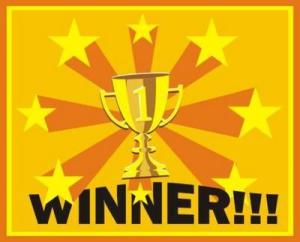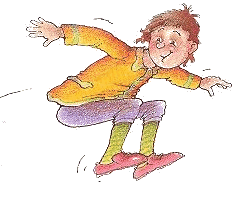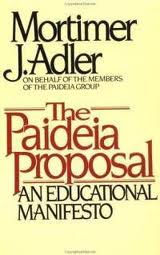Professional Self
Professionally, I’m rather like Mount Kilauea on the Big Island in Hawaii. My intellectual career has been constantly erupting since 1983 but without major incident save for two occasions (for the volcano 2005 and 2008, for me 1992 and 2012). In 1992, I graduated with my Master of Arts from The University of Wyoming and headed off for my first full-time instructor post at a state school on the bayous of South Louisiana. My college teaching career lasted another eight years until I took a career-leave-of-absence in 2001 to birth and raise our children. In 2012, I’ve returned to my educational roots for an academic refresher at NC State and a second Master of Arts, this time, in teaching. I feel my softened brain continue to gain form and shape with each passing day.
Last week I was assigned my cooperating teacher for my upcoming student teaching, and although I was peeved that this assignment’s location will require a one-hour drive to and from destination, I was delightfully pleased when I began my email exchange with my mentor. Miraculously, I suspect I’ve happened upon a fantastic pedagogical union here. I’ll be working with juniors (the age I am most interested in teaching) from both echelons of Secondary academia, two sections of Honors A.P. English as well as two sections of general 11th grade English (mentor: “…they are lower level academically, but they are my first love and I am very, very good with them.”). I perceive this venue as the perfect outlet to test some YA lit. Stay tuned until final FOKI update…
And here I am, at the final departure gate, luggage in hand, ready for flight. Although I no longer suffer from the
softened brain of August, I do question how I will fit my enlarged noggin into a winter hat. At present, my intellectual quotient is divided by five, six really, for this class has counted as two. But more on that later; I don’t want to use up all my FOKI fodder out of the gate. As it were, the end of this semester finds me at present exhausted, but within a rested week, I will be ready to tackle my own classroom (in a student teacher sort of way). I am ready, eager almost, to try out these new found intellectual wares, to see which are effective, and which need tweaking. Will it be the young adult texts that bridge the gap from theory to practice or the young adult methodologies? Perhaps the technology? Likely, all of the above.
Literate Self
Having formerly taught various literature courses —primarily American and British— I could regale hours of knowledge on dead, white men and their intellectual leanings, but I have a rather large academic hole where YA literature is concerned. During my ten-year professional hiatus, I spent many, many hours reading. I would occasionally dabble in some of the classics I had either overlooked or not had time for in prior years (D.H. Lawrence, Theodore Dreiser, Charlotte Bronte), but I mostly read popular modern literature with a historical fiction slant (Geraldine Brooks, T. C. Boyle, John Krakauer), or travel narratives and satirical humor (Paul Theroux, David Sedaris). Like a devout foodie, I always welcome a new gastric or literary dish: I’ll try it once, but that doesn’t mean I’ll reorder again.
I have consumed the aforementioned young adult literary dish thrice over now, and I have Paper Covers Rock waiting in my literary free-time wing. I continue to tabulate a running list of YA books that sound intriguing and worth a closer look. Unlike many of my peers, I have found my foray into this genre engaging and clearly worth further development. I have begun to tackle the issues of time and pertinence regarding YA lit in the Secondary classroom, but I have yet to draw any decisive conclusions.
My Amazon cart continues to grow (okay, so it’s a wish list), and my library checklist is now on my phone for accessibility ease. I intend to consume a large quantity of young adult lit this summer for my students, my daughters, and for myself. I expect to increase Marc Aronson’s publishing dividend for it is my goal to develop a theme that has a young adult nonfiction text as its cornerstone. I have already developed a thematic unit for my methods class that uses excerpts from The Crystal Stair, but Nelson’s work is more of an adornment on the thematic crown than the crown itself. I’m shooting for nonfiction coronation.
Virtual Self
Ha! Ask me this question before May 21st, 2012, and I would have called myself a proud emailing-texter crossover. Since I began the M.A.T. program in May I’ve spent as many hours trawling the web for explanation or mastering the latest web 2.0 tool’s learning curve as I have reading articles, novels, and preparing essays. I had no idea what a technological dinosaur I had become. I would be lying if I said I didn’t find the abundance of computer skills exceedingly time consuming and sometimes frustrating, but ultimately, I recognize the need for and appreciation of my new found skills. You should have seen the pathetically unabashed smile on my face when I finished the design of my first weebly, toondo, prezi, or storybird.
Ha! Ask me this question before August 16th, 2012, and I would have called myself semi-ICT literate. Midway through this semester, I would argue that my 2.0 tool apprenticeship now warrants a paycheck! Although I continue to curse the invention of hyperlinks and non-linear websites, I no longer shy away from the more complex tasks and their technical gizmos. Mind you, I have confirmed my prior suspicions that technical tools do make for a more varied learningscape, but they DO NOT make for a simpler one.
Ha! In case I didn’t make myself clear during my FOKI mid, let me restate: the digital world undoubtedly makes for a more diverse educational playing field, yet this assertion DOES NOT correlate to a simpler game. But now that I have drunk the web 2.0 Kool-aid, I can no longer imagine an educational surface free from technology anymore than I can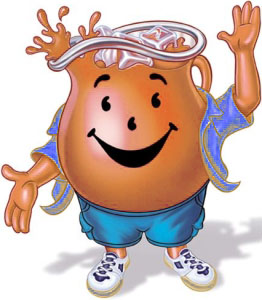 recall myself plucking away at a typewriter. I have come to embrace technology with an almost embarrassing zeal. My greatest fear is that I will be stuck teaching at an institution like where I am observing, which has access to a computer cart for two days, once every two weeks! And you would be aghast to see the outdated Lenovos the kids are forced to work on. Shameful and fearful!
recall myself plucking away at a typewriter. I have come to embrace technology with an almost embarrassing zeal. My greatest fear is that I will be stuck teaching at an institution like where I am observing, which has access to a computer cart for two days, once every two weeks! And you would be aghast to see the outdated Lenovos the kids are forced to work on. Shameful and fearful!
My Professional Goals for This Course
I thought my professional goals for this course were more congruently aligned with my knowledge of YA literature, but I’m going out on a limb here and suspecting that I’ll be learning as much about managing hyperlinks and web tools as I will about YA prose. Perhaps it is fair to assume that the literary content and technological skills in this course are mutually exclusive. I’ll get back to you on that one.
I’m “back to you on this one,” and six weeks into this course has assured me that, yes, this course is 1/3 YA lit, 1/3 technology, and 1/3 logical and reasoning skills. I would also sprinkle this entire analysis with a healthy dose of humor-laden patience.
Your honor, the jury rests.
My Literary Goals for This Course
I plan to swallow, digest, and absorb as much YA information as my gullet can hold throughout the next three months. I have no preconceived expectations of the material except for the innate directness of the genre’s writing style. I do hope to broaden my appreciation of the sci-fi/fantasy craze that even my eldest daughter seems to find bewitching. I must have missed the genetic coding on that one (and vampires too).
I have swallowed, digested, and absorbed a moderate amount of YA lit over the last six weeks, but I am eager for more. If I had my literary druthers I would ix-nay the Action Learning Project entirely and focus on more literary sampling. I know full well that once I begin my student teaching, I will likely not find opportunity to crack another young adult novel until summertime. I would be further enamored of this course were its time used more succinctly with the genre of its titling. I must complete a research action project in two of my other five courses; that means three action research projects and a whole lot less literary sustenance for my classroom table (insert disappointment here).
Since I arrived at this course’s opening without any preconceived notions regarding its contents or the genre of young adult literature, I have unfailingly held true to my indifference and benefited all the more because of it. I leave this classroom a far wiser student of nonfiction, how it works, how it can be effective, how to disguise its shortcomings. Ditto for graphic novels. I also leave this classroom with a clearer understanding of what Secondary students desire in their literature, both personally and academically; be it Manga, Fantasy, Historical Fiction, Coming of Age, what teen readers seek is not an easy task, and it will be my duty of sorts to provide the literary buffet I have so often referred to. This task will be easier and the results more effective now that I am a better informed purveyor of tastes and aesthetics.
My Virtual Goals for This Course
To find an avatar that accurately reflects the middle-aged woman.
I have come to like my Angelia Jolie/Lara Crofty freakish fembot with her unruly ponytail and obviously youthful swag. Although I proudly removed my avatar’s tattoos –why put a bumper sticker on a Bentley?– and kept her tacky military 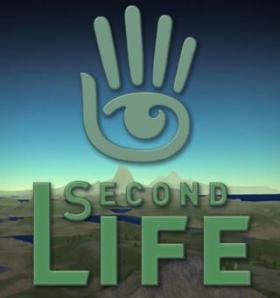 pants, I have yet to see the front of her face? Perhaps one day I will bear witness to my own Second Life visage. Sure, that’s my next virtual feat. And for what it’s worth, although Second Life has its technical glitches, its inclusion in this course does provide a essential forum for camaraderie.
pants, I have yet to see the front of her face? Perhaps one day I will bear witness to my own Second Life visage. Sure, that’s my next virtual feat. And for what it’s worth, although Second Life has its technical glitches, its inclusion in this course does provide a essential forum for camaraderie.
I assert that Second Life is the most amenable and resourceful online teaching forum (can you believe I just said that?); it is a truly collaborative space. Unlike Moodle, which relies on the written word, favoring the writer over the mathematician, or the unintentionally goofball Elluminate forum, Second Life allows for the most natural traditional classroom parallel. Double bonus: Second Life provides an advantage over the traditional classroom in the form of gas money, child care, and attire selection!
Synthesis
I am actually the best type of student for an instructor to have for this course, I am an admitted ELA clean slate. I have little preconceived notions regarding the nature of adolescent literature and I am historically open to all genres of literature. Experience has taught me to bide my time, consider each week’s material as it arrives, digesting what works, discarding what doesn’t, but waiting until the end of the semester before deciding what to make of it all. Years of positioning in both the front of the classroom and within one of its seats has taught me the power of learning; if I cannot listen to everything, I will hear nothing. I suspect Dr. Grant, Tom, that is, would sport a chesire grin knowing that I was tackling this material online; he would pat me on the back with a go-get-em nod and a wink. Thanks Tom, again.
There is no doubt that my insights and skills have evolved since the pre of my FOKI, but I have considerably more to learn regarding young adult literature. If I can manage to keep my sense of humor and curiosity for this course peaked, there exists no question that I will come away from 521 a more learned scholar and vibrant purveyor of young adult literature. My concerns over time management and course construction continue to saddle my enthusiasm, but I will undoubtedly continue to listen to what I may not initially hear. I still need to make Tom proud (wink)!

